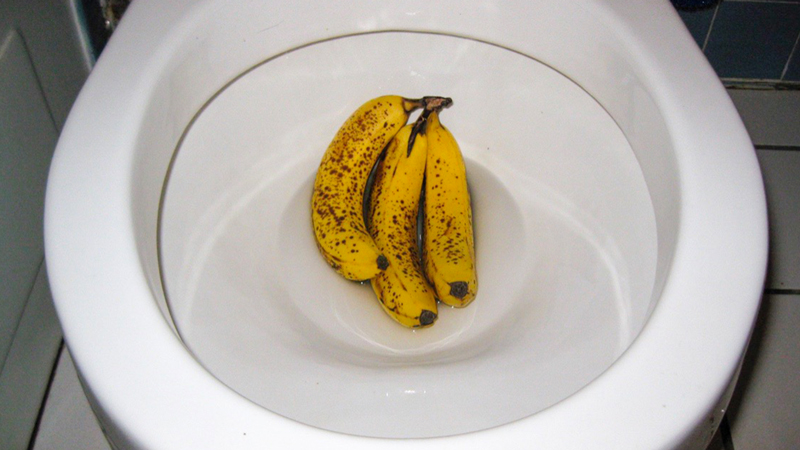Is it Feasible to Flush Food in the Toilet?
Is it Feasible to Flush Food in the Toilet?
Blog Article
Were you searching for help and advice around What Can Happen If You Flush Food Down the Toilet??

Introduction
Many people are usually confronted with the predicament of what to do with food waste, specifically when it comes to leftovers or scraps. One usual concern that emerges is whether it's fine to flush food down the commode. In this article, we'll look into the reasons why individuals might take into consideration flushing food, the effects of doing so, and alternate approaches for proper disposal.
Reasons that people might think about purging food
Absence of awareness
Some people might not know the potential damage caused by purging food down the bathroom. They might incorrectly think that it's a safe practice.
Ease
Flushing food down the toilet might seem like a quick and very easy remedy to dealing with undesirable scraps, specifically when there's no close-by garbage can available.
Laziness
Sometimes, individuals may merely choose to flush food out of sheer negligence, without considering the effects of their activities.
Repercussions of flushing food down the commode
Environmental impact
Food waste that winds up in rivers can add to pollution and harm water communities. Furthermore, the water made use of to purge food can strain water resources.
Plumbing issues
Purging food can lead to clogged pipelines and drains, triggering costly plumbing fixings and hassles.
Types of food that need to not be flushed
Fibrous foods
Foods with fibrous structures such as celery or corn husks can get tangled in pipelines and cause clogs.
Starchy foods
Starchy foods like pasta and rice can take in water and swell, resulting in clogs in pipes.
Oils and fats
Greasy foods like bacon or food preparation oils ought to never be purged down the toilet as they can solidify and trigger blockages.
Appropriate disposal techniques for food waste
Making use of a waste disposal unit
For homes geared up with waste disposal unit, food scraps can be ground up and purged via the pipes system. Nonetheless, not all foods appropriate for disposal in this fashion.
Recycling
Certain food product packaging products can be reused, lowering waste and minimizing ecological influence.
Composting
Composting is an environment-friendly means to throw away food waste. Organic materials can be composted and used to enrich dirt for gardening.
The value of appropriate waste monitoring
Lowering environmental injury
Appropriate waste administration practices, such as composting and recycling, aid lessen pollution and maintain natural resources for future generations.
Shielding pipes systems
By staying clear of the practice of flushing food down the commode, property owners can avoid pricey pipes repair services and maintain the stability of their pipes systems.
Conclusion
In conclusion, while it might be alluring to purge food down the commode for ease, it is essential to comprehend the prospective consequences of this activity. By embracing appropriate waste management techniques and throwing away food waste properly, people can contribute to healthier pipes systems and a cleaner environment for all.
FLUSH FOOD DOWN THE TOILET?
FLUSHING FOOD CAN CAUSE BLOCKED DRAINS IN YOUR HOME
All of the plumbing fixtures in your home are connected to the same sewer pipe outside of your home. This outdoor sewer pipe is responsible for transporting all the wastewater from your home to the Council sewer mains. Even small pieces of food that go down the kitchen sink can cause problems for your sewer. It should therefore be obvious that flushing larger bits of food, such as meat, risks a clog in either the toilet itself or the sewer pipes. Flushing greasy food is even more problematic because oil coagulates when it cools, coating the interior lining of your pipes.
THE TOILET IS NOT A BIN
Food isn’t the only thing that people shouldn’t be flushing down the toilet. People use the toilet to dispose of all kinds of things such as tampons, makeup wipes, dental floss, kitty litter and even underwear. Water goes to great lengths to educate residents about the high costs and stress placed on wastewater treatment systems simply from people flushing the wrong stuff down the toilet. It costs taxpayers millions of dollars each year, and homeowners thousands in blocked drain repairs.
FLUSHING FOOD IS A WASTE OF WATER
Flushing food is a waste of our most precious resource - water. In June this year Level 1 water restrictions were introduced to protect water supply from drought conditions. Much of New South Wales continues to be affected by prolonged drought with recent figures revealing up to 97 per cent of the state remains in drought. Depending on whether you have a single or dual flush toilet, every single flush uses between five and 11 litres of water. In the current climate this is a huge amount of water to be wasting on flushing food that should be placed in the bin (or better yet, the compost).
https://www.jabplumbingsolutions.com.au/blog/can-you-flush-food-down-the-toilet

As an avid person who reads on What Can Happen If You Flush Food Down the Toilet?, I was thinking sharing that information was sensible. For those who appreciated our blog posting if you please don't forget to share it. Thanks a lot for being here. Revisit us soon.
Quote & Schedule Report this page